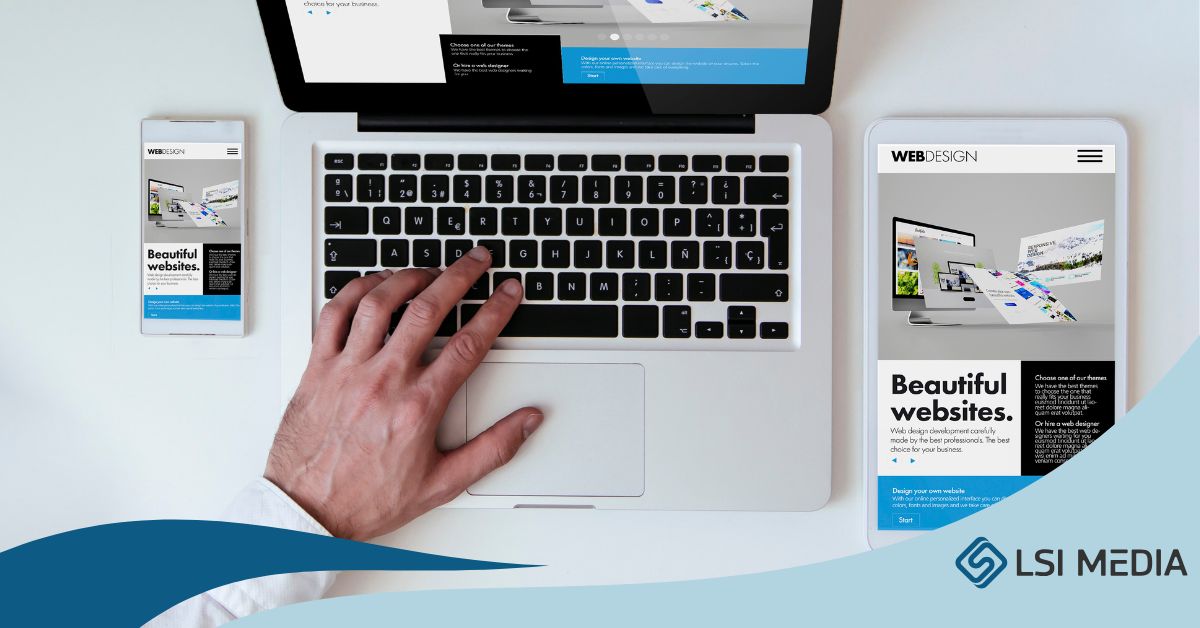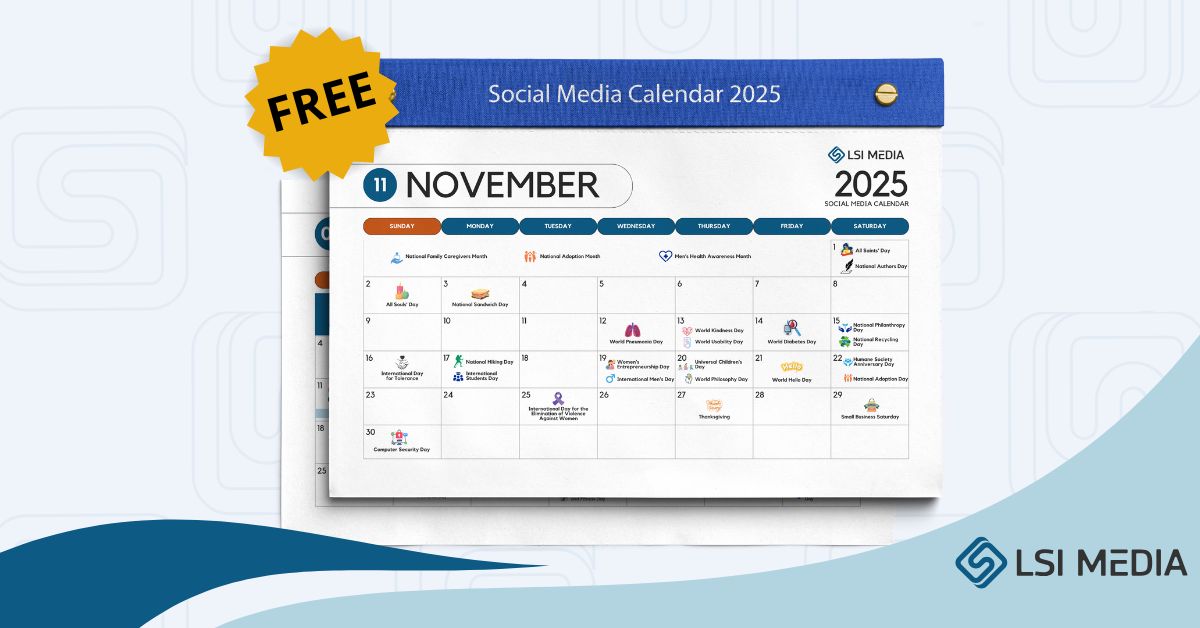How Web Design Can Skyrocket Your Marketing Game
Picture a potential client visiting your website for the first time. Within seconds, they form an impression that could make or break your business relationship. Quality web design isn’t just about aesthetics—it’s the foundation of your digital marketing success.
In today’s competitive marketplace, your website often speaks before you do. The layout, colors, and functionality effectively communicate your brand’s value and professionalism long before any direct conversation takes place.
This article explores how thoughtful web design transforms ordinary marketing efforts into exceptional results that drive growth and differentiate businesses from the competition.
Why Web Design Matters for Your Marketing Strategy
Most business owners recognize the need for a website, but they underestimate the profound impact of web design on marketing performance.
Consider this: when someone lands on your homepage, they’re not just looking at pictures and text—they’re experiencing your brand. Every click, scroll, and interaction either builds or erodes their confidence in your offer.
Research shows that visitors form a visual opinion of your website in just 50 milliseconds. This snap judgment affects whether they stay, explore, or click away to a competitor.
The overall website experience is critical in how people perceive your brand. A smooth, intuitive experience builds trust, while a confusing or dated site raises doubts about your business.
Elements of Effective Website Design
Creating impact requires balancing several critical components that work in harmony:
Visual Elements That Capture Attention
First impressions form instantly. The visual aspects of your site must:
The layout serves as an invisible hand, directing visitors toward important information. When done right, people hardly notice the design—they find what they need without effort.
Visual design goes beyond decoration. It communicates values and builds recognition. Using color, images, and space creates emotional connections with visitors.
A visual hierarchy helps visitors understand what is most important on each page. Larger elements, brighter colors, and strategic positioning guide attention to key messages and actions.
Navigation That Makes Sense
A maze-like experience frustrates visitors. Clear navigation options create paths that feel intuitive and natural.
People rarely tolerate confusion. If finding basic information requires detective work, most visitors abandon the search entirely, taking potential revenue with them.
The menu structure should reflect how visitors think about your content, not how you organize things internally. A user-friendly menu system follows these principles:
Typography That Reinforces Your Message
Font selection goes far beyond aesthetics. The right typography makes content digestible and sets the tone for receiving messages.
Reading from screens already taxes eyes. Innovative web design acknowledges this reality by employing fonts that reduce strain while maintaining brand character.
Readability matters more than decorative appeal. Even the most beautiful font fails if people struggle to read your content. Good typography choices include:
How to Design a Website That Converts
Beauty without function wastes opportunity. Effective sites strike a balance between form and purposeful action.
Focus on User Experience Design
UX design starts with a simple question: “What does the visitor need now?”
A coffee shop website might prioritize hours and location, while a consultant might feature case studies. Great web design anticipates questions before visitors ask them.
User interface and UX design work together. The UI provides the visual tools and buttons, while the UX ensures that those tools make sense in context.
User-friendly design prioritizes the visitor’s needs. This approach reduces frustration and makes people more likely to stay and engage with your content.
Optimize for Different Devices and Screen Sizes
Mobile usage continues to climb yearly. Your responsive website needs flawless performance across:
The days of designing for a single screen size ended years ago. Today’s users bounce between devices, expecting consistency wherever they land.
Mobile devices now account for more than half of all web traffic. If your site doesn’t work well on mobile devices, you’re missing connections with a significant portion of your audience.
Design responsive layouts that adjust automatically to different screen sizes. This approach ensures content remains accessible and attractive on any device.
Incorporate Clear Calls to Action
Without direction, visitors wander. Each page should contain purposeful signposts pointing toward meaningful engagement.
The best calls to action feel like helpful suggestions rather than desperate sales pitches—they naturally extend the conversation.
Design elements, such as buttons, forms, and highlighted text, guide visitors toward taking action. Strategic placement of these elements increases the chances of conversion.
Animation can draw attention to important calls to action. Subtle movement catches the eye without becoming distracting or annoying.
Working with a Website Designer vs. DIY Options
Creating your digital presence offers multiple paths forward:
The Role of a Web Designer in Marketing
Professional web designers bring more than technical skills—they understand psychology, user behavior, and conversion principles.
This expertise often pays for itself through improved results. Skilled website designers translate marketing goals into visual strategies that drive business outcomes.
Website designers apply proven design principles. They understand how to create layouts that guide visitors through a logical journey on your site.
Front-end development brings designs to life. While designers create the visual concept, front-end developers implement it with code that works across browsers and devices.
Using Templates and Free Website Builders
Template solutions offer viable starting points for businesses with limited budgets. Many entrepreneurs begin here while building resources for custom development.
Modern platforms provide surprisingly customizable templates with reasonable flexibility, though limitations eventually emerge for growing businesses.
Website templates provide pre-designed layouts that you can customize to meet your specific needs. They save time and money while giving you a professional look without requiring a complete overhaul.
Free website options work well for small projects or temporary needs. They often include basic tools for adding content, changing colors, and uploading images.
Building a Portfolio of Design Examples
Thoughtful planning involves studying what works. Before committing to any approach, examine websites that effectively serve similar audiences.
Create a collection of designs that resonate with your vision, noting specific elements that might be useful for your project.
Look beyond your industry for inspiration. Sometimes the best ideas come from observing how completely different businesses approach and solve design challenges.
SEO and Web Design Working Together
Search visibility requires technical and creative harmony:
How Web Design Impacts Your SEO
Behind beautiful interfaces lies code that search engines scrutinize. Clean, structured programming helps algorithms understand the value of your content.
Page speed, mobile responsiveness, and intuitive structure all play a role in search rankings. Great web design addresses these technical requirements while maintaining a visually appealing design.
SEO isn’t separate from design—it’s an integral part of the process. Search engines reward websites that provide a good user experience with higher rankings.
CSS helps separate content from presentation. This clean code structure makes it easier for search engines to index your content accurately.
Balancing Graphic Elements and Load Times
High-resolution images and videos can engage visitors but may also hinder performance. Finding the sweet spot requires careful optimization.
Each second of load time increases bounce probability by 32%. Balance means creating visual impact without sacrificing speed.
Visual elements, such as photos, illustrations, and graphic elements, require proper optimization. Compress images and utilize modern formats to preserve quality while minimizing file size.
Accessibility in Modern Web Design
Inclusive design reaches wider audiences:
Making Your Site Available to All Users
Nearly one in four Americans lives with some disability. Accessibility features aren’t optional extras but essential components of effective web design.
When sites work well for people with disabilities, they generally work better for everyone.
Accessibility means designing websites that work for people with:
Following Best Practices for Inclusive Design
Design incorporates considerations for various abilities and situations. Color contrast, keyboard navigation, and screen reader compatibility create universal access.
Beyond ethical considerations, accessibility often carries legal implications that warrant proactive attention.
Best practices for accessible design include:
How to Stand Out Online with Unique Web Design
In crowded markets, distinction matters:
Moving Beyond Basic Templates
While templates provide solid foundations, customization creates memorability. Small, thoughtful adjustments can transform conventional layouts into distinctive experiences.
The goal isn’t to be different for difference’s sake—it’s to create authentic digital spaces that reflect real brand personality.
A website using templates can still stand out with the right modifications. Consider these approaches:
- 1
Custom photography instead of stock images
- 2
Unique color combinations within your brand palette
- 3
Custom icons and illustrations
- 4
Thoughtful animations that support your message
Incorporating Your Brand Identity
Consistency builds recognition across channels. Your website should feel like a natural extension of all other marketing materials.
Brand recall strengthens with each exposure across platforms when visual language remains consistent.
On-brand design maintains visual consistency with your other marketing materials. Your website should feel like it belongs to the same family as your business cards, brochures, and social media profiles.
Design incorporates your brand’s personality and values. Every color choice, image, and word should reflect your business identity.
The Technical Side of Web Design
Behind every great website lies technical expertise:
Understanding the Front-End Development Process
Front-end developers bring designs to life using coding languages like HTML, CSS, and JavaScript.
The development process transforms static designs into interactive experiences. This technical work ensures your site functions properly across browsers and devices.
CSS controls how your website looks. This coding language manages colors, layouts, fonts, and spacing to create visually consistent experiences.
Front-end developers ensure your site looks good and performs well. They optimize code for speed and compatibility.
Working with Coding Languages
Modern websites use several coding languages for different purposes:
Understanding these basics helps you communicate better with designers and developers.
Coding languages continue evolving. Modern approaches like responsive design require technical knowledge to implement properly.
Creating User-Centered Web Design
Effective design puts visitors first:
Understanding Your Intended Audience
Design decisions should start with a clear picture of your typical visitors. What do they need? What problems are they trying to solve?
Websites succeed when they speak directly to the needs and expectations of their intended audience. This requires research and empathy.
Effective web design starts with knowing who will use your site. Different audiences have different expectations:
- 1
Younger audiences may expect more interactive elements
- 2
Professional audiences value clarity and efficiency
- 3
Technical audiences appreciate depth and detail
Optimizing the User Journey
Map the paths visitors take through your site. Each step should move them closer to their goals—and yours.
Common user journeys include:
Measuring the Success of Your Web Design
Data reveals what intuition cannot:
Key Metrics to Watch
Effective measurement goes beyond traffic numbers. Track meaningful interactions:
- 1
Conversion paths
- 2
Engagement depth
- 3
Behavioral flows
These indicators reveal whether design decisions support business objectives or create unexpected obstacles.
Set clear goals for what your website should accomplish. These might include generating leads, making sales, sharing information, or building community.
Making Data-Driven Design Updates
Websites evolve through informed iteration. The most successful businesses treat their sites as ongoing projects rather than completed tasks.
Small, strategic adjustments based on user behavior often yield substantial improvements.
Data helps prioritize design improvements. Focus first on fixing problems affecting the most visitors or important conversion paths.
E-commerce and Web Design
For online stores, design directly impacts the bottom line:
Creating Effective Shopping Experiences
E-commerce sites face unique design challenges. The shopping experience must be intuitive enough to make purchases without confusion.
E-commerce design should focus on:
- 1
Clear product presentations
- 2
Simple navigation between categories
- 3
Streamlined checkout processes
- 4
Trust signals throughout the buying journey
Building Trust Through Design
Online shoppers can’t touch products or speak with salespeople. Your design must fill these gaps by building confidence.
Trust-building design elements include:
- 1
Professional photography
- 2
Detailed product information
- 3
Security indicators and certifications
- 4
Easy access to policies and support
Web Design Trends Worth Considering
Stay current without chasing every fad:
Current Design Approaches That Work
Some current trends offer real benefits:
- 1
Minimalist layouts that reduce distraction
- 2
Micro-interactions that provide feedback
- 3
Strategic white space that improves readability
- 4
Dark mode options that reduce eye strain
Timeless Design Principles
While trends come and go, certain design principles remain constant:
- 1
Clear visual hierarchy guides attention
- 2
Consistent navigation builds familiarity
- 3
White space improves comprehension
- 4
Color and contrast create emphasis





















